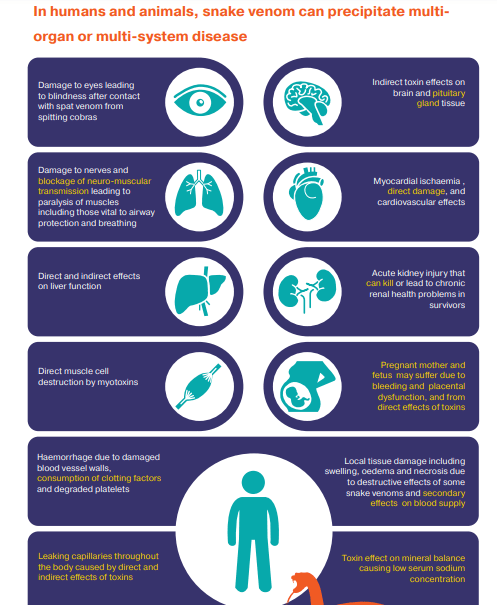The World Health Organization recently launched its new global snakebite strategy, aiming to reduce snakebite deaths and related disability (Snakebite envenoming) cases by 50 percent by the year 2030. For this WHO has estimated the cost of $82.36 million. The strategy include:
- Empower and engage communities
- Ensure safe, effective treatment
- Strengthen health systems
- Increase partnerships, coordination and resources
- A multifocal incremental response by countries
WHO Data
- According to the WHO, an estimated 5.4 million people are bitten each year with up to 2.7 million envenomings.
- Around 81 000 to 138 000 people die each year because of snake bites, and around three times as many amputations and other permanent disabilities are caused by snakebites annually.
- Bites by venomous snakes can cause paralysis that may prevent breathing, bleeding disorders that can lead to a fatal haemorrhage, irreversible kidney failure and tissue damage that can cause permanent disability and limb amputation.
- Agricultural workers and children are the most affected. Children often suffer more severe effects than adults, due to their smaller body mass.
What is Snakebite Envenoming?
- Snakebite envenoming is a neglected tropical disease (NTD) that is responsible for enormous suffering, disability and premature death on every continent.
- The economic cost of snakebite envenoming is unmanageable in most countries, as it affects not only the victims but often their entire families, particularly in poor communities in low- and middle-income countries that do not have social security.
- Although there are currently more than 3000 species of snakes in the world, approximately 250 of these are listed by WHO as being of medical importancebecause of the harm their venoms can do.



